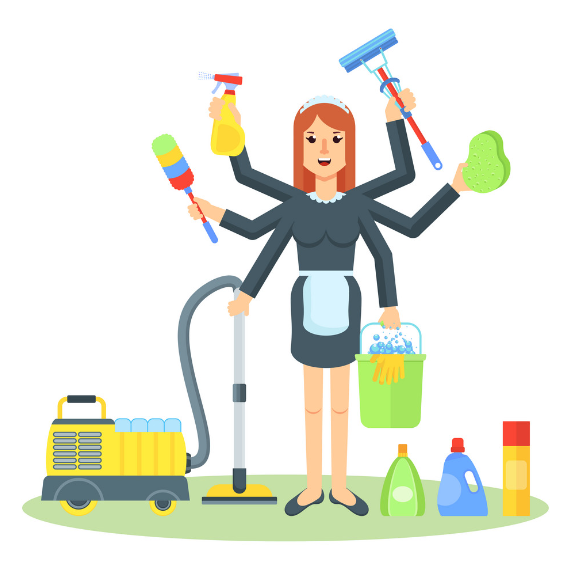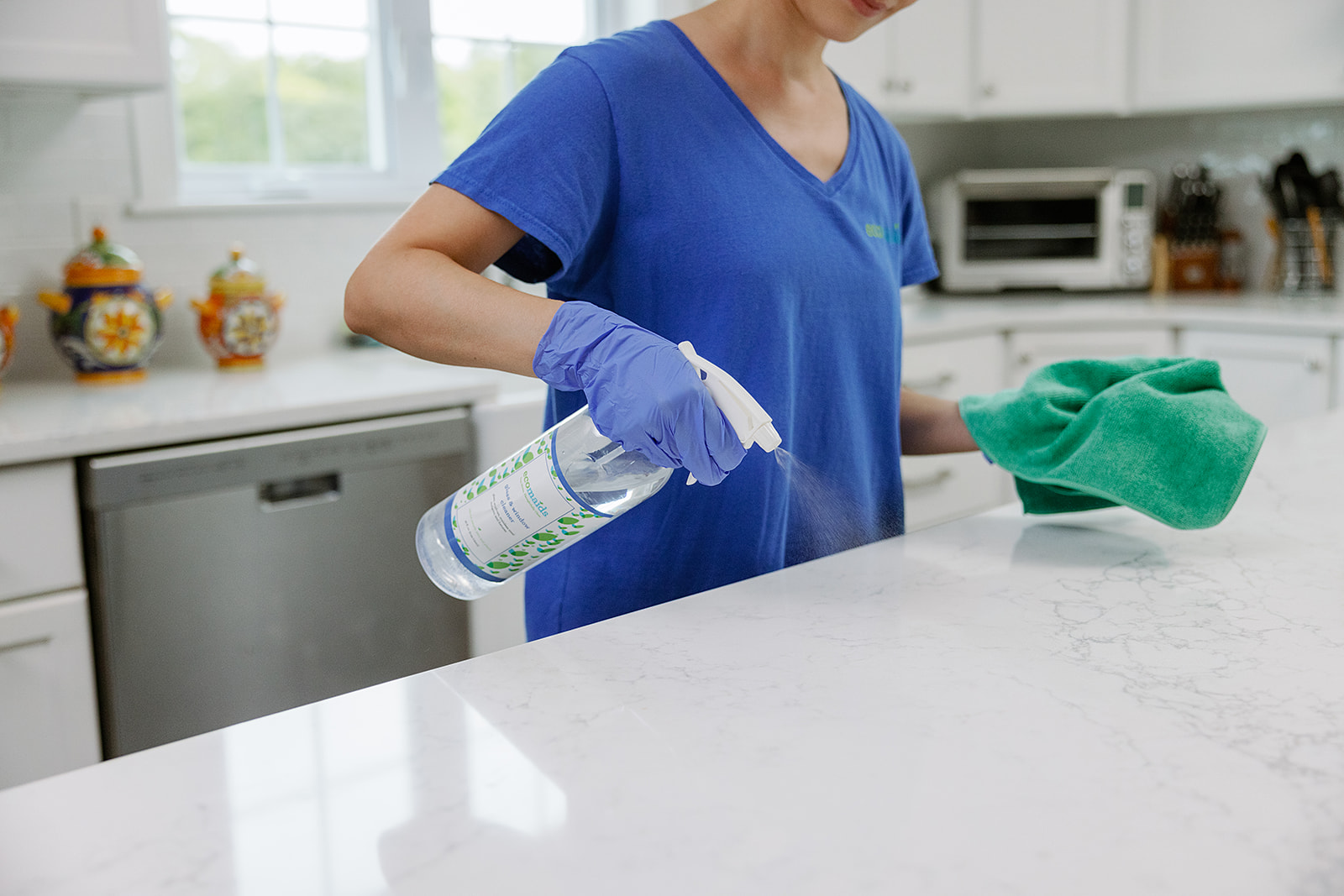Understanding the Requirement for Extensively Disinfecting and Sterilizing Frequently Touched Surfaces in High-Traffic Locations
In the world of public wellness and security, the precise disinfection and sanitization of frequently touched surface areas in high-traffic locations stand as vital steps in stopping the spread of dangerous microorganisms. By exploring the various elements of surface area disinfection, from the risks linked with disregarding cleansing procedures to the effective approaches that can be utilized, a more clear understanding arises of the essential function these practices play in safeguarding public wellness.
Value of Surface Area Sanitation
Highlighting the detailed sanitation of high-traffic surfaces is vital in keeping a sanitary environment and protecting against the spread of dangerous pathogens. High-touch surface areas such as door manages, light switches, lift buttons, and kitchen counters offer as reproducing grounds for infections and germs. Normal disinfection of these surface areas is crucial to reduce the danger of contamination and transmission of illnesses.
By carrying out a robust disinfection protocol, institutions and services can develop a much safer environment for employees, visitors, and clients. Appropriate surface area sanitation not only alleviates the spread of transmittable diseases however additionally instills confidence in the tidiness and safety and security of the properties. This proactive technique shows a commitment to wellness and health, which is particularly essential in high-traffic areas where the probability of exposure to pathogens is heightened.
Additionally, surface area sanitation plays a vital duty in overall infection control techniques. Integrated with hand health practices, putting on masks, and maintaining physical distancing, comprehensive sanitation of high-touch surface areas develops a detailed protection against the transmission of dangerous microbes. Focusing on surface disinfection is an important element of a holistic approach to health and security in shared spaces.
Risks of Neglecting Cleansing Practices
Disregarding thorough sanitation of high-traffic surface areas considerably enhances the risk of viral and microbial contamination, posturing a severe risk to the wellness and safety of individuals often visiting these rooms. Failing to implement correct cleaning techniques can result in the accumulation and spread of hazardous pathogens, consisting of germs and viruses, on often touched surfaces such as doorknobs, hand rails, elevator switches, and counter tops.

In addition, overlooking the value of extensive cleaning not just compromises the health of individuals yet also weakens efforts to keep a clean and sanitary setting. It is essential to identify the importance of correct disinfection methods in avoiding the spread of infections and guarding public health and wellness.
Reliable Disinfection Techniques
To preserve optimum tidiness and lower the risk of contamination on high-traffic surfaces, utilizing reliable sanitation approaches is important. One of the most reliable and typical sanitation approaches is making use of chemical anti-bacterials.
An additional efficient technique is the usage of UV-C light. UV-C light has actually been revealed to be efficient in killing a broad range of bacteria by disrupting their DNA structure, thus stopping them from reproducing. It is vital to use UV-C light properly, making certain that the proper strength and exposure time are applied to attain the preferred disinfection outcomes.
In addition, utilizing steam cleansing as a disinfection approach can be highly reliable, especially on surface areas that are heat-resistant. Steam can pass through porous surface areas and eliminate germs, infections, and other virus efficiently. When making use of steam cleaning, it is very important to ensure that the surface area reaches the called for temperature for a sufficient quantity of time to ensure proper sanitation.
Impact on Public Health And Wellness
The upkeep of high standards of sanitation and sanitation on high-traffic surfaces plays a critical role in securing public health. Often touched surface areas in locations with high footfall, such as doorknobs, handrails, elevator switches, and toilet facilities, work as reproducing grounds for damaging virus. Failing to sufficiently decontaminate these surfaces can lead to the fast spread of contagious conditions within areas. By implementing extensive sanitation procedures, the threat of transmission of infections, microorganisms, and various other bacteria can be dramatically lowered.
Reliable cleanliness methods not only safeguard individuals from dropping unwell yet likewise add to the overall well-being of society. Public wellness authorities stress the value of preserving clean environments to stop episodes and consist of the spread of health problems. In high-traffic areas like airports, schools, medical facilities, and public transportation systems, the influence of strenuous disinfection actions can not be understated. Focusing on the sanitization of often touched surfaces is an aggressive technique to promoting public wellness and improving the safety of people in shared spaces.
Executing Normal Cleaning Methods
Promptly setting up and adhering to a constant timetable of cleaning methods is paramount for keeping the cleanliness and safety and security of high-traffic surfaces. Normal cleaning methods are vital in avoiding the accumulation of germs and virus on frequently touched surfaces, specifically in locations with high foot traffic. By carrying out a methodical technique to cleansing, organizations can efficiently lower the threat of disease transmission and produce a much healthier setting for employees, customers, and the public.
To develop an efficient cleaning routine, it is critical to identify high-traffic areas that need regular focus. These areas might consist of doorknobs, hand rails, lift switches, toilet facilities, and shared equipment. Executing a routine cleaning program that targets these surfaces several times a day can substantially minimize the spread of unsafe microorganisms and infections.
Moreover, utilizing proper cleaner and disinfectants is crucial to making sure that surfaces are thoroughly sterilized. Normal training of cleaning up personnel on appropriate cleansing strategies and the significance of adherence to the cleansing routine is also vital in maintaining a hygienic setting. By focusing on constant cleaning protocols, companies can advertise the health and wellness and wellness of individuals that connect with these high-traffic surface areas.

Conclusion
In conclusion, it is critical to focus on thorough disinfection and sanitization of frequently touched surfaces in high-traffic areas to prevent the spread of damaging microorganisms and preserve public health and wellness. Ignoring proper cleansing techniques can boost the danger of contamination and transmission of illness. By carrying out routine cleaning protocols and using effective sanitation approaches, we can produce a much safer environment for everyone (Scrub the Surfaces). It is necessary to acknowledge the importance of maintaining tidy surface areas in high-traffic locations to guarantee the well-being of the area.
In the realm of public wellness and safety, the thorough disinfection and sanitization of regularly touched surfaces in high-traffic locations stand as extremely important procedures in stopping the spread of dangerous pathogens. By exploring the various aspects of surface disinfection, from the threats connected with disregarding Everyday cleaning cleaning methods to the effective techniques that can be used, a clearer understanding arises of the vital function these techniques play in protecting public wellness.Additionally, utilizing vapor cleaning as a disinfection approach can be highly efficient, specifically on surfaces that are heat-resistant. When utilizing steam cleansing, it is important to make sure that the surface area gets to the required temperature level for an enough amount of time to guarantee appropriate sanitation.
In verdict, it is important to focus on comprehensive sanitation and sanitization of regularly touched surfaces in high-traffic areas to avoid the spread of dangerous virus and maintain public health.
Comments on “Detailed Everyday Cleaning Tips: From Defrosted and Cleaned Every Few Months to Removing Clutter”